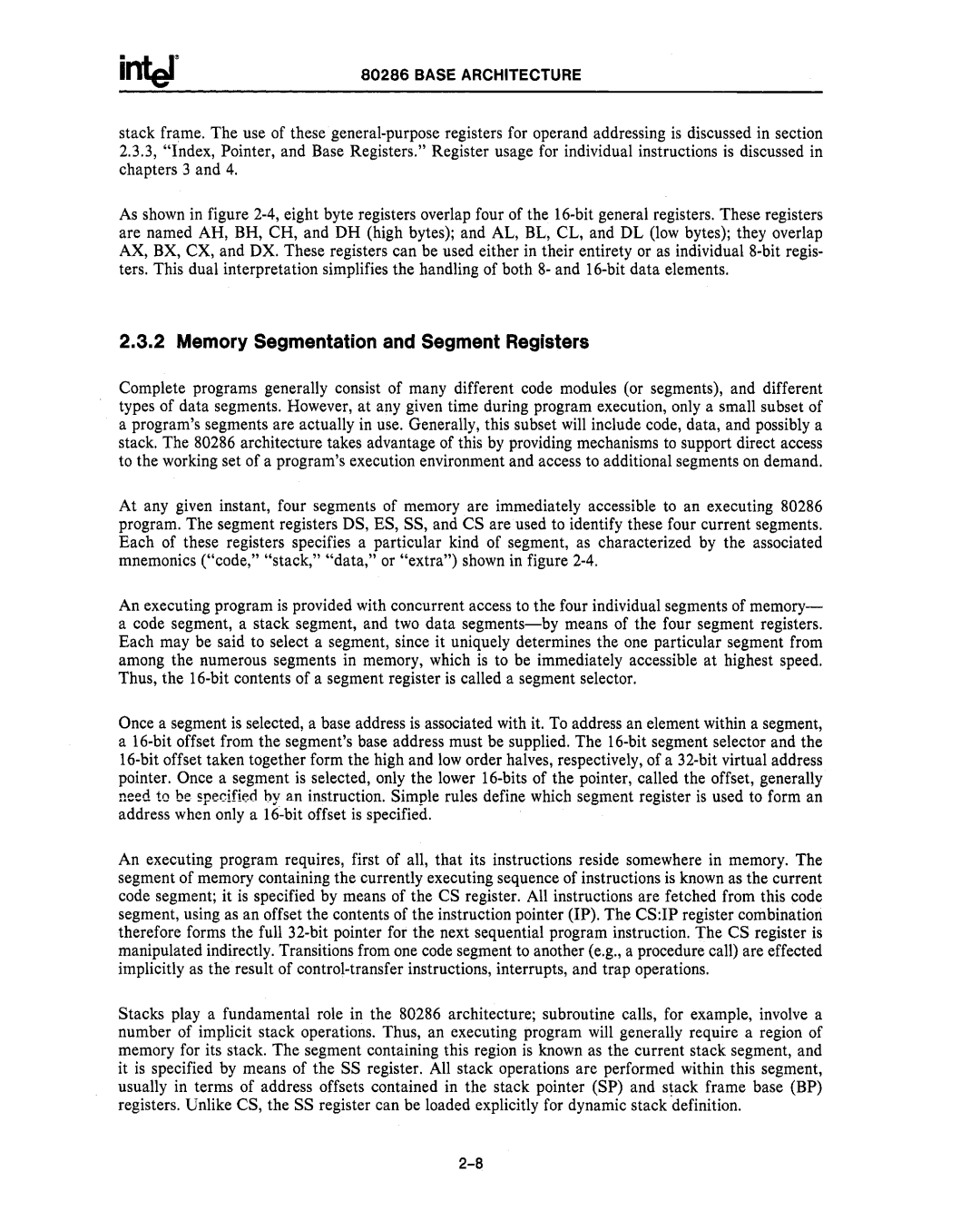
80286 BASE ARCHITECTURE
stack frame. The use of these
As shown in figure
2.3.2 Memory Segmentation and Segment Registers
Complete programs generally consist of many different code modules (or segments), and different types of data segments. However, at any given time during program execution, only a small subset of a program's segments are actually in use. Generally, this subset will include code, data, and possibly a stack. The 80286 architecture takes advantage of this by providing mechanisms to support direct access to the working set of a program's execution environment and access to additional segments on demand.
At any given instant, four segments of memory are immediately accessible to an executing 80286 program. The segment registers DS, ES, SS, and CS are used to identify these four current segments. Each of these registers specifies a particular kind of segment, as characterized by the associated mnemonics ("code," "stack," "data," or "extra") shown in figure
An executing program is provided with concurrent access to the four individual segments of memory- a code segment, a stack segment, and two data
Once a segment is selected, a base address is associated with it. To address an element within a segment, a
An executing program requires, first of all, that its instructions reside somewhere in memory. The segment of memory containing the currently executing sequence of instructions is known as the current code segment; it is specified by means of the CS register. All instructions are fetched from this code segment, using as an offset the contents of the instruction pointer (IP). The CS:IP register combination therefore forms the full
Stacks playa fundamental role in the 80286 architecture; subroutine calls, for example, involve a number of implicit stack operations. Thus, an executing program will generally require a region of memory for its stack. The segment containing this region is known as the current stack segment, and it is specified by means of the SS register. All stack operations are performed within this segment, usually in terms of address offsets contained in the stack pointer (SP) and stack frame base (BP) registers. Unlike CS, the SS register can be loaded explicitly for dynamic stack definition.
